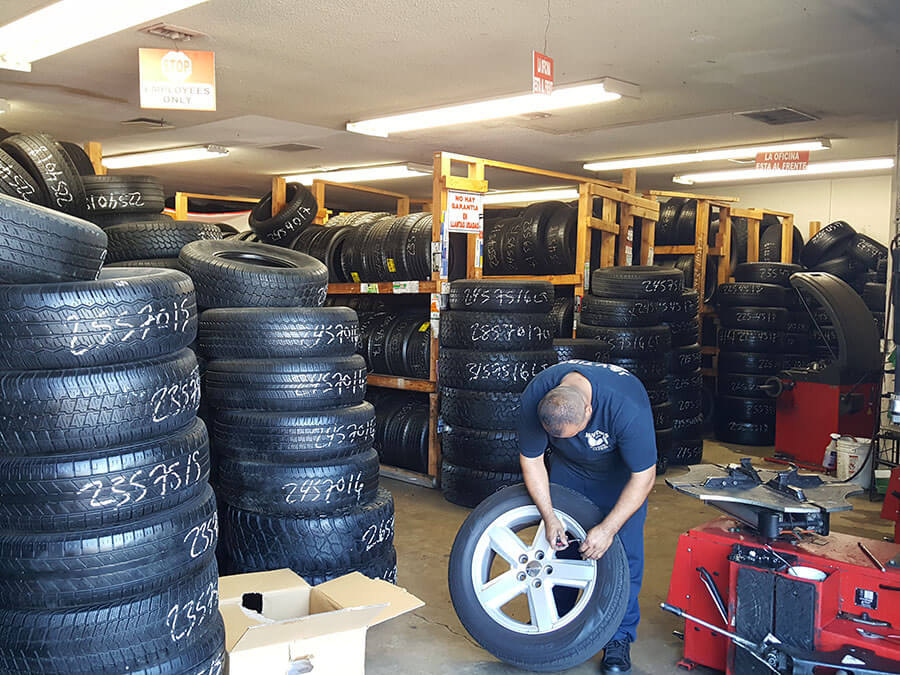Professional Morris Tire and Alignment: Improve Your Automobile's Efficiency
Wiki Article
Tire Service: The Influence of Weather
When it pertains to making sure ideal performance and security when traveling, recognizing the effect of climate condition on tire service is vital. From scorching warmth to icy roads, each weather condition aspect can dramatically influence tire capability and overall driving experience. By delving right into the results of varying climate condition on tires, vehicle drivers can obtain useful understandings that might enhance their automobile's performance and longevity. In this discussion, we will certainly discover the detailed partnership between weather and tire solution, clarifying the value of weather-specific tire upkeep practices and factors to consider.Heat and Tire Efficiency
When revealed to high temperature levels, tires experience adjustments in performance that can substantially influence vehicle safety and handling. The warmth generated from long term driving or warm weather conditions causes the tire rubber to soften, leading to reduced step life and raised wear.Furthermore, high temperatures can increase the procedure of tire aging, causing the rubber to weaken quicker. This can cause cracks, protrudes, and various other types of damage that endanger the structural integrity of the tire. To minimize the results of heat on tire efficiency, drivers must routinely check their tire stress, revolve tires to make certain also wear, and evaluate for any kind of signs of damage. Furthermore, making use of tires particularly developed to hold up against heats can assist keep optimum performance and safety and security on the roadway.
Cold Climate Effects
Cold climate conditions can have a significant influence on tire performance and safety. As temperature levels decline, tire rubber can solidify, bring about decreased traction on icy or snow-covered roadways. In chilly weather condition, tires might likewise lose air pressure more quickly, which can influence taking care of and fuel effectiveness. Additionally, cool temperatures can create tire sidewalls to stiffen, enhancing the risk of damage from gaps or various other road risks.
To reduce the results of cool weather on tires, it is critical to routinely examine tire stress and inflate them to the supplier's recommended degrees. Using winter or all-season tires developed for cool weather problems can likewise boost traction and hold on icy or snowy roadways - tire shop morris. Correct tire maintenance, consisting of routine assessments for wear and damages, comes to be much more important throughout colder months to guarantee optimum performance and safety and security
Rainy Conditions Impact
During wet conditions, tire efficiency and safety and security can be dramatically influenced by the wet roadway surface areas and reduced visibility. The step pattern of tires plays a crucial function in preserving grip on damp roads. Tires with worn-out footsteps are much more vulnerable to hydroplaning, where a layer of water develops in between the roadway and the tire surface area, causing loss of traction. To fight this, drivers need to consistently evaluate their tires for appropriate walk depth and consider investing in tires specifically created for wet conditions.

Snow and Tire Safety
When driving in snowy problems, having the best tires can make a substantial distinction in safety and security and efficiency. Winter season tires are made with special rubber substances and tread patterns to supply far better traction on snow and ice compared to all-season tires.In addition to making use of winter season tires, it is crucial to ensure they are correctly blown up. Winter can cause tire stress to drop, influencing traction and handling (tire shop morris). Frequently inspecting and maintaining the proper tire stress is essential for ideal efficiency in snowy problems

Weather-Related Tire Maintenance
When confronted with various weather condition conditions, appropriate tire maintenance comes to be an important facet of lorry safety and efficiency. Weather-related tire upkeep incorporates an array of practices intended at making certain optimal tire feature and durability in different weather condition situations. One crucial aspect of weather-related tire upkeep is tire stress regulation. Changing temperature levels can create tire pressure to differ, affecting traction and fuel efficiency. Routinely changing and examining tire pressure according to producer recommendations is necessary for risk-free driving in changing weather. In addition, tire walk depth plays a substantial function in managing different weather components. Tires with appropriate step depth give better grasp on damp or icy roadways, reducing the danger of skidding or hydroplaning. Evaluating tire step consistently and changing tires when tread wear gets to a particular deepness is essential for keeping traction and stability in unfavorable weather. By prioritizing weather-related tire upkeep, drivers can improve safety, enhance lorry performance, and prolong the lifespan of their tires.Conclusion
Finally, weather have a considerable influence on tire performance and safety and security. From heat influencing tire pressure and wear to winter reducing traction, it is important to take into consideration the weather condition when maintaining and utilizing tires. Stormy conditions can reduce grasp and result in hydroplaning, while snow can increase the risk discount tires morris il of mishaps if tires are not correctly furnished. Weather-related tire upkeep is important in ensuring ideal efficiency and safety when driving.In this conversation, we will explore the complex connection between weather condition conditions and tire solution, shedding light on the importance of weather-specific tire maintenance techniques and factors to consider.

Report this wiki page